Best Education Articles of 2021: Our 21 Most Shared Stories This Year About Students, Learning Recovery, Mental Health, School Politics & More
By Steve Snyder | December 21, 2021
It feels as if schools have now entered a third phase of the pandemic filled with child vaccines, adult boosters, rolling quarantines and learning recovery efforts — and of course mounting questions about the infectious new Omicron variant. If the 2019 school year was defined by emergency measures and campus closures, and the 2020 school year was about triaging the best possible classroom plans for unvaccinated school populations, the 2021 school year has thus far been one steeped in hope and urgency: Hope that vaccines will bring an end to the global health emergency and allow classrooms to safely return to normal, and urgency surrounding the students who have been pushed off track over the past 20 months — from core skills to key milestones to college and career goals.
Our most widely circulated education coverage this year focused largely on how school is still looking a whole lot different today than it did two years ago, how educators and policymakers are both recognizing the need for urgent learning recovery efforts, and how emerging political fights over schools and curriculum are straining an already stretched system.
These were our 21 most shared and debated articles of 2021:

Exclusive Data: An Inside Look at the Spy Tech That Followed Kids Home for Remote Learning — and Now Won’t Leave
Investigation: When the pandemic forced Minneapolis students into remote learning, district officials partnered with Gaggle, a digital surveillance company that uses artificial intelligence and a team of content moderators to track the online behaviors of millions of kids across the U.S. every day. Now, public records obtained by The 74 offer an unprecedented look at how the Minneapolis school district deployed a controversial security tool that saw rapid national growth during the pandemic but carries significant civil rights and privacy concerns. The data highlight how Gaggle puts children under relentless digital surveillance long after classes end for the day. In Minneapolis, officials say the tool helps identify youth at risk of suicide. But some worry that rummaging through students’ personal files and conversations on their school-issued Google and Microsoft accounts could backfire. Read Mark Keierleber’s full report.
— Read Our Previous Coverage: ‘Don’t get Gaggled’ — Minneapolis school district spends big on student surveillance tool, raising ire after terminating its police contract (Read more)
With Up to 9 Grade Levels Per Class, Can Schools Handle the Fallout From COVID’s K-Shaped Recession?
Learning Loss: Wealthy newcomers from expensive cities like New York and San Francisco propelled housing prices in Austin, Texas, into the stratosphere in 2020, pushing out families of modest means and sending demographic shockwaves through the area’s schools. It’s just one manifestation of the pandemic’s K-shaped recession, a downturn barely felt by the affluent people at the top of the K but devastating to the people at the bottom. As schools prepared to reopen this past fall, research was showing that COVID had put the most disadvantaged students even further behind while propelling privileged children ahead and hollowing out the middle. Meaning the span of academic mastery in individual classrooms — seven grade levels in “normal” times — had widened even further, to as many as nine grade levels. In this chapter of The 74’s series examining the link between the pandemic’s economic turmoil and challenges in classrooms, Beth Hawkins takes you inside an Austin school that’s poised to meet the needs of its “bookend students” — the kids furthest ahead and behind — and may be a model for addressing the COVID classroom crisis. Read our full dispatch from Texas — and see other chapters from our K-shaped report:
— Early Education: D.C.’s missing students and the rush to avert a COVID classroom crisis (Read more)
— School Funding: Will fallout from COVID’s K-shaped recession finally fix Delaware’s Jim Crow-era school funding rules? (Read more)
— Prepared For the Crisis: Recession, recovery & robotics — Can CTE and Reno’s reinvented schools avert the COVID classroom crisis? (Read more)
— Rebuilding Towards Equity: Trailblazing leader was hired to fix Colorado Springs schools. Will doubling down on his reforms avert crisis? (Read more)
— 74 Explains: WATCH — How COVID’s K-shaped recession could widen achievement gaps:
— Inside Our Special Report: The fallout from the pandemic’s K-Shaped recession may be felt by students for years (See our full series)
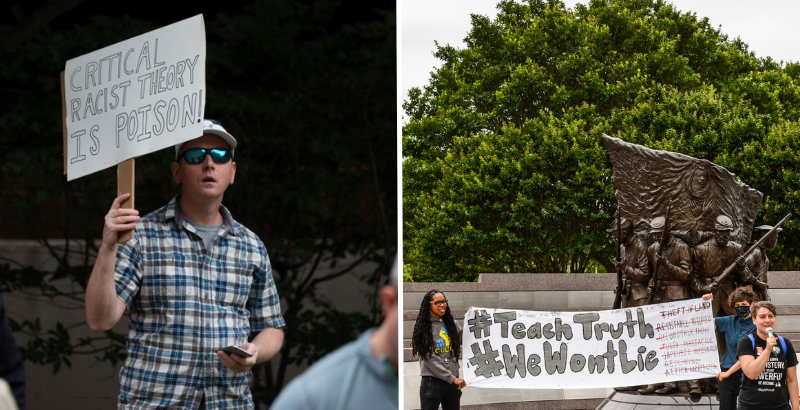
Chaos Theory: Amid Pandemic Recovery Efforts, School Leaders Fear Critical Race Furor Will ‘Paralyze’ Teachers
Critical Race Theory: Calls for teachers to wear body cameras, mountains of records requests and threats against school administrators are among the flashpoints in an emerging new front in the nation’s culture wars, as parents and other opponents of critical race theory push back against its perceived influence in the classroom. As of June, when this feature was originally published, nine states had banned implementation of the once-obscure theory, which in the minds of many encompasses a host of racial and equity-related initiatives, from culturally responsive teaching to social-emotional learning. For many teachers, the backlash felt like a new kind of McCarthyism, where they fear being harassed, fined or fired for a wide array of classroom activities associated with the examination of structural racism in America. “It’s a huge distraction at a time when we can’t afford a distraction,” Dan Domenech, executive director of AASA, The School Superintendents Association, told reporter Linda Jacobson ahead of the start of the 2021 school year. “This has been a year the majority of students were not exposed to the kind of learning they should have been exposed to. Now you’re going to paralyze teachers because they are afraid to teach.” Read our special report.
— From July: On the Front Lines — From security guards to twitter breaks, how school leaders are responding to an unsettling season of public outrage (Read more)

How White Extremists Teach Kids to Hate
School Safety: Five days after extremists used the fringe video gaming platform Dlive to livestream a mob attack on the U.S. Capitol in January, a youthful white nationalist logged on to the site and offered his take about the future of a movement he helped create — a radical agenda, experts warn, that’s targeted at teens. As the Capitol riot reawakens many Americans to the persistent reality of white supremacists among us, experts on extremism are sounding the alarm about the ways alt-right groups weaponize video games and streaming platforms to recruit and radicalize impressionable young minds. For teenagers whose isolation has been heightened by the pandemic, the desire for connection makes them particularly vulnerable, particularly in the current political climate. But experts say parents and educators can intervene before it’s too late. Read more Mark Keierleber’s report.
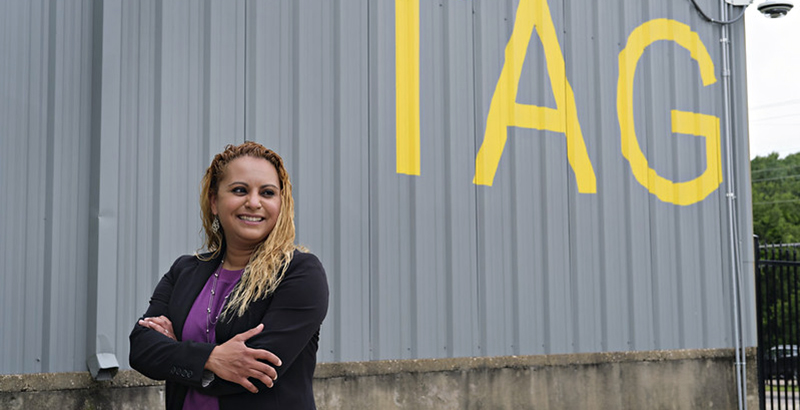
Fearing a ‘Second Pandemic’ of Student Trauma, School Leaders Are Doubling Down on Mental Health First Aid Training
Mental Health: Between April and October of 2020, emergency room visits rose 24 percent for kids ages 5 to 11 and 31 percent for ages 12 to 17 over the year before, a trend experts attribute to pandemic stressors adding to the already mounting crisis of anxiety-related disorders in young people. As students then returned to in-person learning last winter, these symptoms began showing up in classrooms — and teachers became the first line of defense. Fearing what this might mean for the start of the 2021 school year, educators began signing up for Mental Health First Aid certification over the summer. The course, administered by nonprofits including Communities in Schools, reminds adults nationwide that they aren’t “superheroes” — but they can guide young people toward getting help with a mental health challenge while decreasing the stigma and judgment around the struggles many are facing in the pandemic’s wake. In the first installment of a special three-part series produced in partnership with Texas Tribune, Bekah McNeel looked at how this training helped educators at one Texas school — as well as other teachers around the country — deal with their students’ often hidden mental health issues. Read our special report.
— Also in This Series: How a mental health ‘desert’ in Texas became a beacon of counseling services for thousands of children and families (Read more)
— Through Students’ Eyes: Second graders ‘show’ their pandemic challenges through art — and ‘tell’ how their teacher helped them stay strong (Read more)

Social-Emotional Learning or ‘White Supremacy with a Hug’? Yale Official’s Departure Sparks a Racial Reckoning
SEL: For seven years, Dena Simmons drove efforts to make the Yale Center for Emotional Intelligence’s popular social-emotional learning program, RULER, more culturally relevant for students with life experiences like hers — a Black girl from the Bronx. Her message resonated with educators across the country in districts struggling with the racial mismatch between teachers and students. “Dena’s star was certainly on the rise … because she brought a perspective in content that was transformational,” Andre Perry of the Brookings Institution told reporter Linda Jacobson. But Marc Brackett, the Yale center’s director and a well-known guru on the role of emotions in learning, saw things differently. Emails shared with The 74 and interviews with Simmons and other former staff members at the center show Brackett balked at efforts to include political figures, such as former President Barack Obama, and current texts, such as a book about a transgender boy, into RULER’s lessons. Such approaches, Brackett warned, could get the program “banned.” Simmons’s frustrations peaked in 2020, when she became the target of racial slurs during an online event meant to foster racial healing, and she resigned in January. The clash at the Yale center — and the response to her departure — tell a larger story about what some see as a pressing need to address historical discrimination and others criticize as efforts to politicize the SEL curriculum. As one leader in the world of social-emotional learning said, “There is a measure of urgency that was not present two years ago.” Read our full investigation.
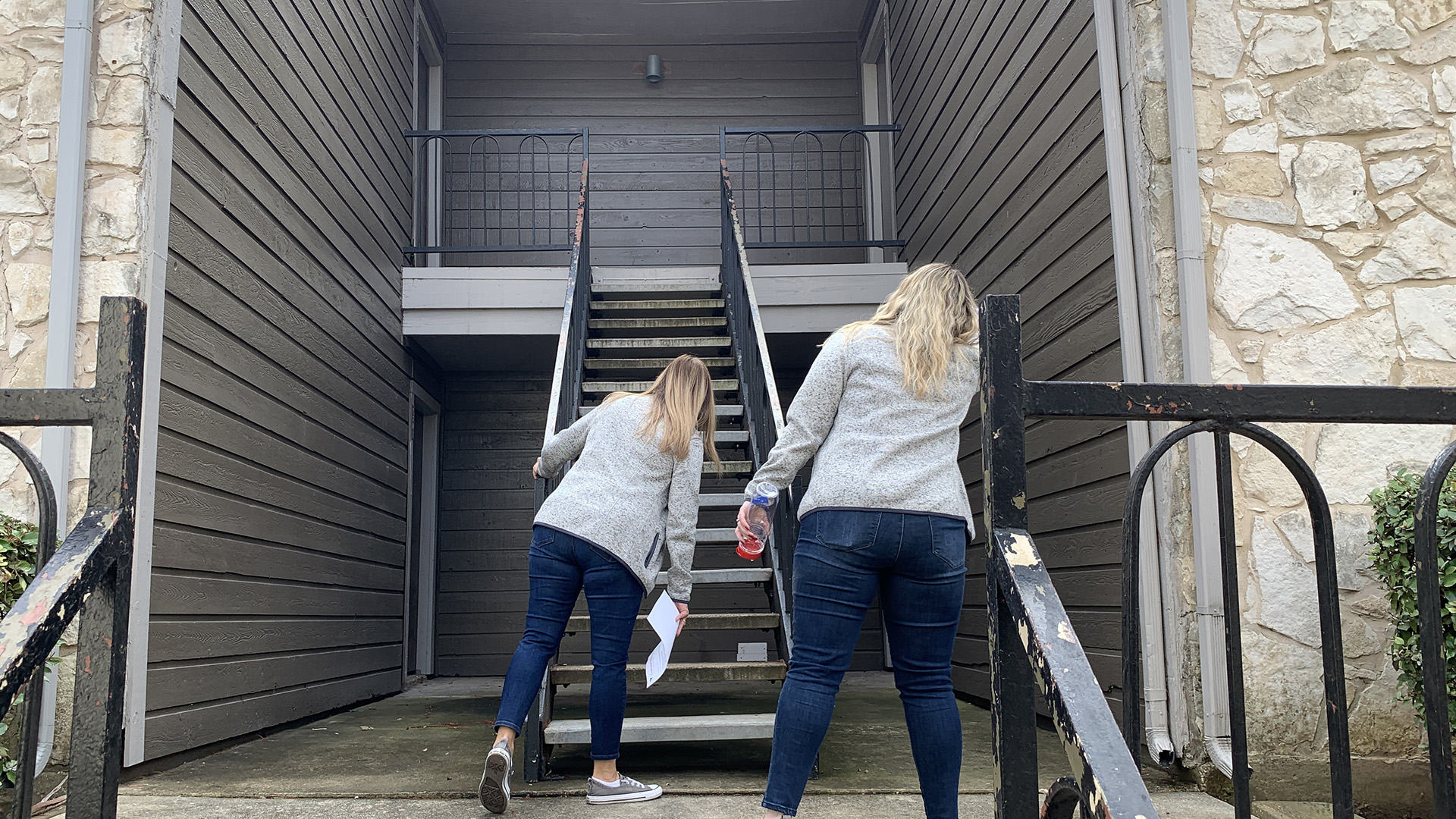
Texas Teachers Go Door to Door as Kids Disappear From Remote Classes
Remote Learning: Middle school teacher Brandee Brandt pounded on the door of a San Antonio apartment for the third time. “It’s Ms. Brandt! Davey, are you there?” she called. Finally, Davey’s older brother cracked open the door. “You really aren’t going away are you?” he said, trying to sound annoyed as a smile tugged at the corner of his mouth. “You know we’re not giving up!” Brandt replied. During the first half of the 2020-21 school year, teachers from Rawlinson Middle School visited around 100 homes, seeking out kids in urgent need of support and engagement. With half the school’s 1,350 students learning remotely during that timeframe, and thus at a higher risk of chronic absence, the teachers come knocking at the first sign of trouble. “I felt a sense of urgency,” Principal Sherry Mireles said, “If they’re not getting their schooling, it’s our responsibility. “I’m not going to allow a 12-, 13-, 14-year-old to drop out. Not on my watch.” Bekah McNeel rode along this spring and has the story.
— The COVID Warriors: See our special series on the educators going above and beyond to save the pandemic generation at The74Million.org/COVIDWarriors.
How Are States Spending Their COVID Education Relief Funds?
School Funding: Asked by the U.S. Education Department to identify the top issues facing students and schools in the wake of the pandemic, state education officials are remarkably consistent: Their plans for spending their share of federal COVID relief aid for education demonstrate a strong need to expand learning opportunities and address students’ social and emotional needs. But an analysis by FutureEd, a think tank at Georgetown University’s McCourt School of Public Policy, finds that states that have submitted to the department are pursuing those goals in a variety of ways. Contributors Brooke LePage and Phyllis W. Jordan of FutureEd break down how, from tutoring and mental health supports to universal pre-K, museum trips — even a student film festival — states are looking to spend their COVID ed relief funds. Read the essay, and click through our interactive maps.
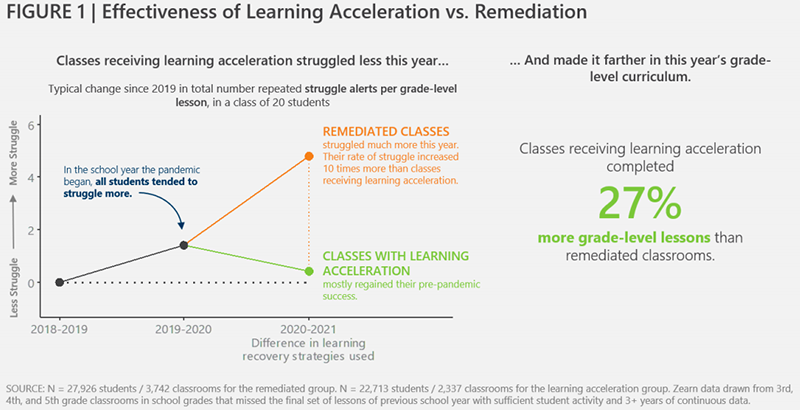
A Better Equation: New Pandemic Data Supports Acceleration Rather than Remediation to Make Up for COVID Learning Loss
Learning Acceleration: In a report released last May, researchers offered some advice for education leaders. As they decide how to spend their federal stimulus dollars and address learning losses in the school year to come, they should consider the lackluster impact of remediation — the typical gap-closing practice of making up missed material before moving on — and new evidence suggesting there’s a better way. TNTP and Zearn analyzed the experiences of 2 million students during the current academic year and found that, on Zearn’s math app, classrooms featuring acceleration — a strategy in which students are challenged by grade-level lessons and instructed in specific missing skills as needed — saw dramatic growth. Students receiving this kind of support completed over 25 percent more grade-level work than they would have using remediation. By contrast, students in remediation continued to struggle. Beth Hawkins talks to the team about their findings.
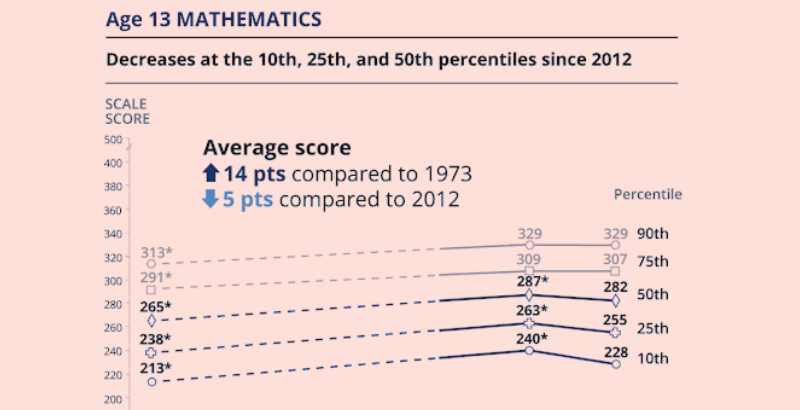
Long-Term NAEP Scores for 13-Year-Olds Drop for First Time Since Testing Began in 1970s — ‘A Matter for National Concern,’ Experts Say
Student Achievement: Over the past few years, education observers have grown accustomed to downbeat news from the National Assessment of Educational Progress, with multiple rounds of the test pointing to largely stagnant scores across various subjects. The release this year of results from NAEP’s 2020 long-term trends assessment offers revelations that are startling as well as discouraging: For the first time in the half-century history of that test, reading and math scores for 13-year-olds significantly declined. Black and Hispanic students in that age group both lost ground in math since the test was last given, in 2012, and the lower performance of 9-year-old girls opened up a gender gap with boys that did not exist nine years ago. Worst of all were the plunging scores of low-performing students — especially those scoring at the 10th percentile, who declined an astonishing 12 points in eighth-grade math. “It’s really a matter for national concern, this high percentage of students who are not reaching even what I think we’d consider the lowest levels of proficiency,” said George Bohrnstedt, a senior vice president at the American Institutes for Research. Read Kevin Mahnken’s full report.
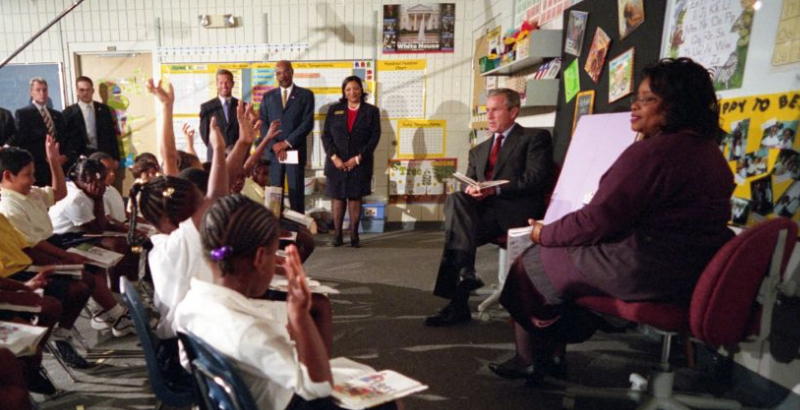
From Tragedy to Triumph to Failure: How 9/11 Helped Pass No Child Left Behind — And Fueled its Eventual Demise
History: Two decades have passed since the morning that changed America forever — a morning that found President George W. Bush in a Florida elementary school, reading with students and attempting to jump-start the passage of the No Child Left Behind Act. Within months of the terrorist attacks of 9/11, a collective sense of grief and purpose led the federal government to declare war on terrorism, even as it pledged to provide an excellent education for every child. But while it is generally acknowledged that Congress passed the landmark legislation partially as a demonstration of national unity, some believe the Bush administration’s emphasis on the global war on terror set back the mission of education reform, as attention waned and bipartisanship dissolved. “That whole sweet thing that was put together in the ’80s and came together in various states and then saw this incredible peak in Washington in 2001 — all of that largely fell apart because of 9/11, and the failure of everyone on all sides to hold it together in the wake of 9/11,” former Bush adviser Sandy Kress told The 74’s Kevin Mahnken. Read our full feature.
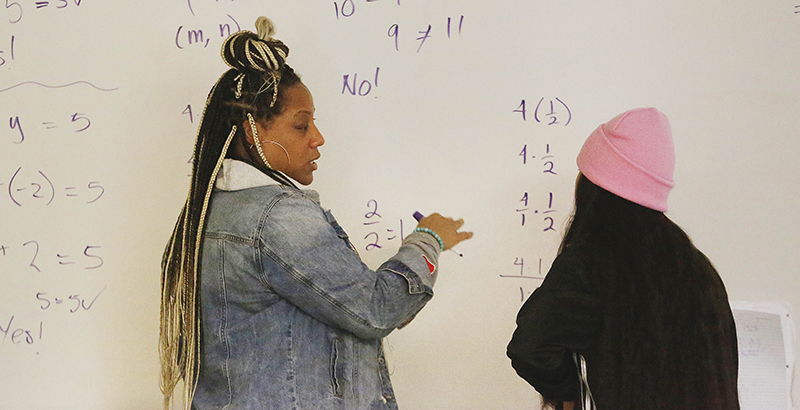
Can Right Answers Be Wrong? Latest Clash Over ‘White Supremacy Culture’ Unfolds in Unlikely Arena: Math Class
Math Skills: A document outlining how to be an “antiracist math educator” has sparked criticism for promoting the idea that focusing on getting students to produce the right answer is one way that “white supremacy culture” shows up in math class. Educators drawing inspiration from the document, part of a larger math equity project at The Education Trust-West — funded with $1 million from the Bill and Melinda Gates Foundation — say the emphasis on accurate calculations shuts down students’ thinking process and turns math into a competition. They say the middle grades especially are a period when many Black and Hispanic students turn off math, resulting in persistent racial disparities in advanced high school classes. Making math more culturally relevant by linking concepts to socioeconomic issues, they say, can help students see the reasons for math in their lives. But some Black scholars think the document only reinforces teachers’ bias against students of color. “The workbook’s ultimate message is clear: Black kids are bad at math, so why don’t we just excuse them from really learning it,” Erec Smith of York College of Pennsylvania told reporter Linda Jacobson. And even math educators devoted to increasing equity said the document can widen divides at a time of political polarization. Read our full report.
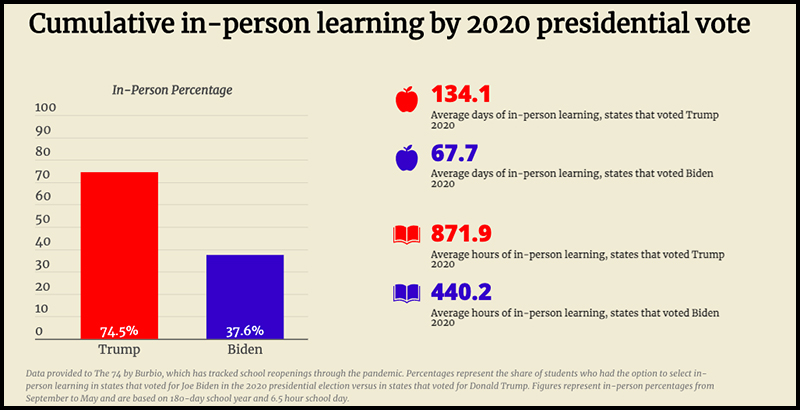
One Fate, Two Fates. Red States, Blue States: New Data Reveal a 432-Hour In-Person Learning Gap Produced by the Politics of Pandemic Schooling
School Closures: Through the pandemic, schools in Republican states offered in-person learning at nearly twice the rate of those in Democratic states, according to new data, amounting to an estimated 66 additional days of face-to-face instruction for those students. The numbers, provided to The 74 by the school calendar tracking website Burbio, deliver a cumulative view of schooling decisions throughout COVID-19 and reinforce evidence of a partisan divide long highlighted by researchers. Averaged from September through May, states that voted for Donald Trump in the 2020 presidential election gave students the chance to learn in the classroom 74.5 percent of the time, compared to 37.6 percent of the time in states that voted for Joe Biden. The full impact of that disparity remains largely unmeasured, says Chad Aldeman, policy director at Georgetown University’s Edunomics Lab. But he suspects the effects on students could be vast. “Time is a rough proxy for learning,” he told The 74’s Asher Lehrer-Small. “So lost instructional time is likely to lead to lost learning.” Read our full report.
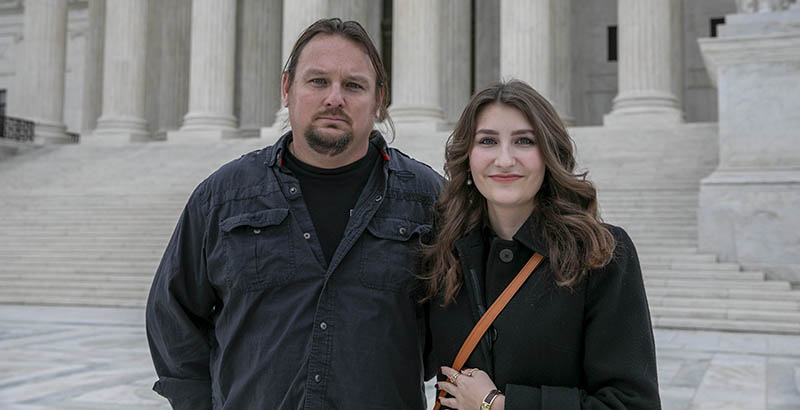
‘Equal Treatment, not Special Treatment’: Conservative Supreme Court Justices Appear Ready to Strike Down Religious Barriers to Public School Choice Funding
SCOTUS: Maine allows private religious schools to participate in its tuition benefit program for families that don’t have a public high school in their community — except for schools that seek to instill religious beliefs in their students. That caveat is at the heart of Carson v. Makin, a school choice case argued before the U.S. Supreme Court in December. Plaintiffs’ attorney Michael Bindas, with the libertarian Institute for Justice, argued that the state is discriminating against religion. He is representing two families that were told they could not receive a tuition benefit because they wanted their children to attend religious schools. Based on the justices’ questioning, experts said, states would likely no longer be able to defend such rules after the court rules next year. “Very few of the justices paid any attention to the longstanding principle at the heart of American constitutional tradition — that taxpayers should not be forced to fund religious education,” said Alex Luchenitser of Americans United for Separation of Church and State. Read Linda Jacobson’s full report on the arguments.
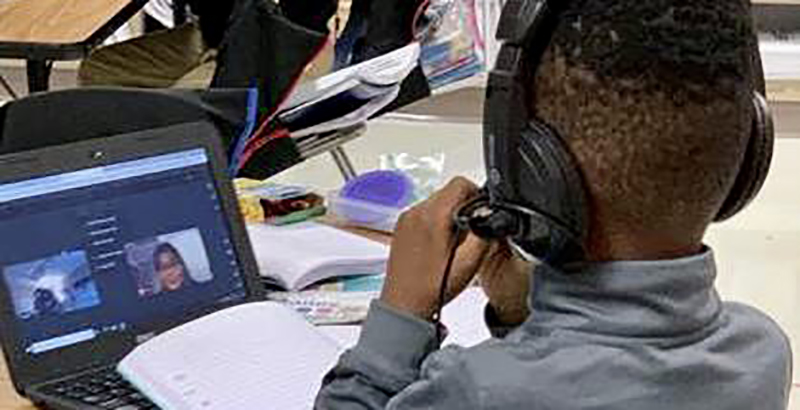
Districts Are Receiving Billions for Academic Recovery, But Some Parents Struggle to Find Tutoring for Their Children
Personalized Learning: Research showing that so-called high-dosage tutoring could give struggling students the academic boost they need to recover from the pandemic created a buzz earlier this year. Parent advocacy groups and policymakers expected to see districts use relief funds on such programs. But nearly halfway through the school year, some districts aren’t using their American Rescue Plan aid to offer tutoring, according to reviews from Burbio and the Center on Reinventing Public Education. Others limit services to specific students or have struggled to find enough tutors. That leaves parents such as Aida Mieja of Los Angeles to pick up extra shifts cleaning offices in order to pay $470 for a private tutor for her ninth grade daughter. In districts such as Nashville, leaders signed up about half the number of tutors they had hoped to recruit this fall. “It’s this giant puzzle,” Keri Randolph, the district’s chief strategy officer, told reporter Linda Jacobson. Tutoring, she said, is “hot and sexy right now, but people have no idea how hard it is.”
— Research: Study shows Chicago tutoring program delivered huge math gains — and personalization may be the key (Read more)
Genocide ‘In My Own Backyard’: North Carolina Educators Ignored State’s Eugenics History Long Before Critical Race Theory Pushback
Curriculum: Even as a young girl, the shadow of a dark history hung over Orlice Hodges. At 7 years old, her grandmother offered an explanation — chilling, in retrospect — of what happened to young women taken away by social workers: They went to Black Mountain to get “fixed.” As she got older, the North Carolina woman would learn the awful meaning. “’Fixed’ meant sterilization,” said Hodges, who was told by family members that her own aunt had been a victim. From 1929 to 1974, North Carolina’s eugenics program sterilized over 7,600 people — in its latter years, disproportionately targeting Black women. To this day, reports Asher Lehrer-Small, none of the state’s 10 largest school districts include the episode in social studies curricula, despite a two-decades-old recommendation from a governor-appointed committee calling on the North Carolina Department of Public Instruction to do just that. An exhibit that included first-person accounts and victims’ medical records commissioned “to ensure that no one will forget what the State of North Carolina once perpetrated upon its own citizens” toured colleges and universities for a few years in the early 2000s before being packed away in a state office basement. That North Carolina’s K-12 schools have almost without exception ignored this tragic history offers a compelling example of how knowledge of racially motivated, government-inflicted harm was suppressed long before the recent debate over critical race theory. Read the full report.
Shipwreck Camp Delivers A Treasure Trove of Science With the Search for Sunken Boats in Lake Erie
STEM: About 6,000 ships have sunk in the Great Lakes in the last 150 years, costing thousands of lives and leaving cargo under water. Those wrecks are now providing a big hook for a summer camp to teach science to teenagers drawn in by the chance of seeing one up close. Case Western Reserve University’s Shipwreck Camp taught students about waves, the lakes, shipping history and how to search for artifacts this summer before taking students to the lake to search for the Adventure and W.R. Hanna, two ships that sank just offshore around 1900. “Shipwreck camp is a thinly veiled exposure to Great Lakes science and technology,” says James Bader, head of the center that runs the camp. “We don’t hide it very well.” Patrick O’Donnell visits the camp — and brought back these photos and videos from the middle of Lake Erie.
— Summer STEM: Saturday science lessons in the park, as Cleveland school district sneaks learning into hands-on experiments at festival (Read more)
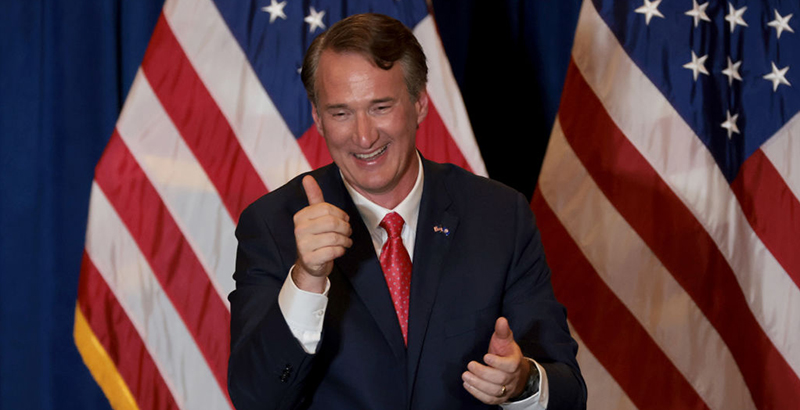
Will the Tea Party of 2022 Emerge from the Debate over Schools? Virginia Election Offers GOP Template for Midterms
EDlection: It took weeks for number-crunchers in both parties to pull apart meaningful conclusions from November’s gubernatorial elections in Virginia and New Jersey. But the races — especially in Virginia, where a well-liked Democrat was denied a second term in a state that Joe Biden won by 10 points last year — have made a few things clear. One is that education, an issue that voters have overwhelmingly trusted Democrats to manage in years past, could be a major vulnerability for the party as the 2022 midterms approach. The other is that, with the midterms now less than a year away, both parties have significant incentives to seize the initiative on K-12 schools. The GOP, which appears to have harnessed public outrage over COVID-related closures and school equity initiatives, has already announced plans to make a national education pitch with a proposed “parents’ bill of rights,” and polling indicates that their base hasn’t been this animated about the state of schools in recent memory. “In many ways, the critical race theory debate of 2021 is just the latest version of the death panel conversation from Obamacare, or the Willie Horton story of 1988,” political scientist Stephen Farnsworth told The 74’s Kevin Mahnken. “The question is whether this can be weaponized to benefit Republicans.” Read our full report.

With Nearly Half of Parents Expected to Forgo Child COVID Shots, Schools Brace for New Wave of Vaccine Hesitancy
Vaccines: Now that the Centers for Disease Control and Prevention has green-lit a COVID-19 vaccine for children ages 5 to 11, schools are bracing for a new source of tension: In poll after poll, nearly half of parents say they do not want their kids to get it. As 74 contributor Greg Toppo writes, that could mean new skirmishes in schools already divided over social distancing and mask wearing. Even requiring the vaccine might not settle the dispute: An October poll found that 46 percent of parents simply wouldn’t send their child to school if COVID shots were required. The sources of vaccine hesitancy range from risk assessment — many parents aren’t especially worried their children will get seriously sick from coronavirus — to fears of some Black parents based on the nation’s history of mistreating research subjects in their communities. But many education experts say that without vaccination, children are likely to spend more time in quarantine, which could exacerbate learning loss. Read the full story.

New Federal Data Confirms Pandemic’s Blow to K-12 Enrollment, With Drop of 1.5 Million Students; Pre-K Experiences 22 Percent Decline
Disenrollment: Preliminary data released in June by the National Center for Education Statistics show that public school enrollment dropped 3 percent in 2020-21 from the year before. The sizable decline — about 1.5 million students, compared with 2019-20’s total population of 51.1 million — was felt across the country, with the biggest decreases in Puerto Rico (minus 5.51 percent), Mississippi and Vermont (tied with minus 5.02 percent). The drop was concentrated heavily among the youngest children: Kindergarten enrollment fell by 9 percent, pre-K by an astonishing 22 percent, even as the high school ranks thinned by just .4 percent. Most of those young learners are expected to return to in-person classrooms, but Robin Lake, head of the Center on Reinventing Public Education, said schools and districts need to prepare now to meet academic and social-emotional needs that had been deferred in the interim. “These kids are owed a lot in terms of the time they’ve missed learning things, playing with other kids, all of that stuff,” she told The 74’s Kevin Mahnken. “So we’re encouraging school districts to put those kinds of supports in place this summer and try to reach as many kids as possible to address some of those foundational skills.” Read the full report.
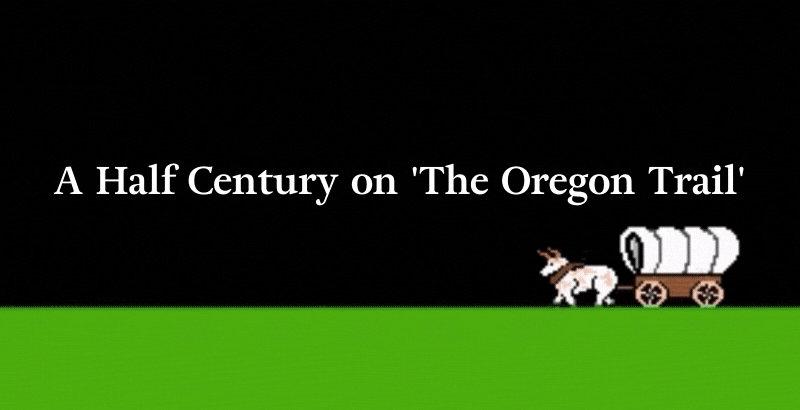
‘Oregon Trail’ at 50: How Three Teachers Created the Computer Game That Inspired — and Diverted — Generations of Student
Games: If you’re of a certain age, chances are you encountered the computer game The Oregon Trail sometime during your school years — you know, the one where you light out in a covered wagon for Oregon’s Willamette Valley, beset by bandits, bad weather and, of course, dysentery. The game now exists in 14 languages and so revolutionized computer gaming that it earned a place in the World Video Game Hall of Fame. It’s a highly improbable trajectory for a game launched in 1971 — 50 years ago today — five years before the first personal computers even came on the market. The Oregon Trail was the brainchild of three Minneapolis student teachers, who brought history to life by placing players in the shoes of settlers facing life-or-death decisions — via a hulking teletype machine connected to a mainframe miles away. Despite sales that would ultimately exceed 65 million copies, however, the trio never saw a dime for their efforts. But they tell 74 contributor Greg Toppo they are not bitter. One said he is still stopped by autograph seekers, who tell him, “’You really saved my life in middle school because of this program.’ It’s just incredible how many people we touched.” Read the full feature.
…And a quick postscript for the time capsule:
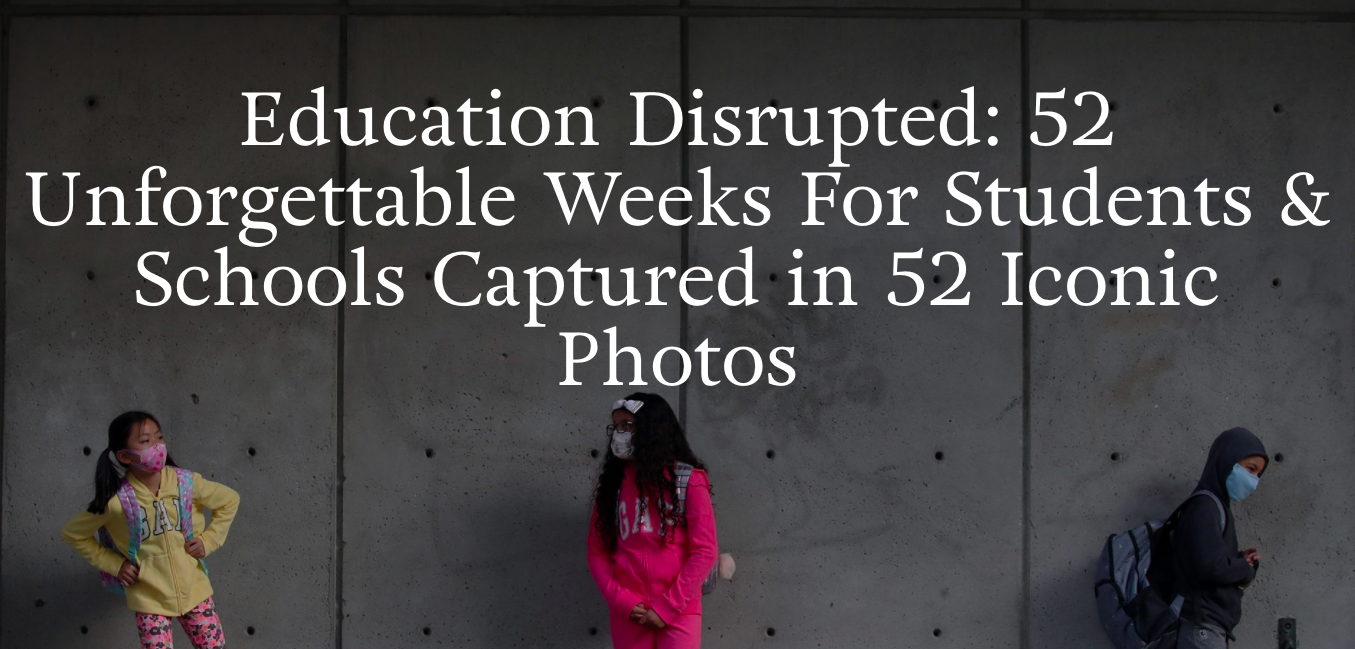
Photo History: Back in early March we realized it had been precisely a year — 52 weeks since the pandemic first swept through the nation, going on to close school after school like a relentless set of dominoes Over the course of a month, The 74’s Meghan Gallagher researched and assembled a photo history of that first pandemic year at schools, amassing 52 photos that captured just how much had changed in educators’ and students’ lives. They are now a haunting time capsule revisiting solemn scenes and sadness across the education landscape — masked students, sports without spectators, dining rooms turned into classrooms and socially distanced lunch periods. But these pictures also show students, their families and educators in moments of resilience and inspiration, reflecting how Americans found new ways to celebrate such milestones as graduations. The images are a reminder that it has been a school year like no other, one we won’t soon forget. See the full photo gallery.
Go Deeper: Get our latest news, features and investigations delivered directly to your inbox — sign up for The 74 Newsletter.
Get stories like these delivered straight to your inbox. Sign up for The 74 Newsletter

